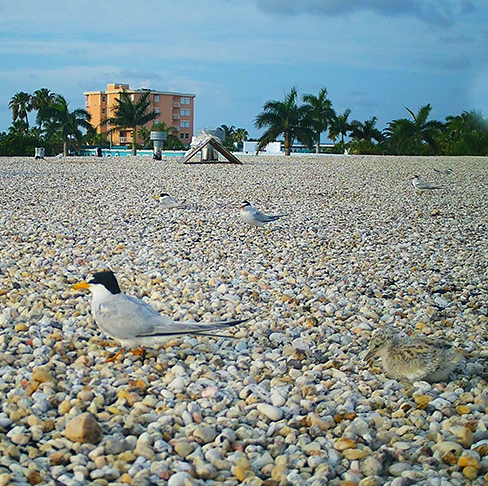
Although Least Terns normally nest on sand or gravel areas on coastal beaches or islands, in some areas of Florida flat building rooftops provide important alternative nesting sites for Least Terns and some other species of birds (note the hatchling in the lower right side of the photo below).

|
While terns, skimmers, and shorebirds typically nest on beaches or islands along the coasts of Florida, some species that include Least Terns, Roseate Terns, Black Skimmers, and American Oystercatchers are increasingly using flat rooftops to nest and raise young in the sunshine state. In response, the Florida Fish & Wildlife Conservation Commission (FWC) is thanking building owners and managers who have successfully hosted nesting birds on their roofs this season. Most rooftop nesting takes place between April and September, but rooftop nesting can begin as early as February for American Oystercatchers in some areas of Florida.
Building rooftops provide important alternative nesting habitat for the above-listed birds because most species that nest on rooftops are imperiled. For example, approximately 50 percent of Florida’s Least Tern nesting populations utilize flat rooftops for nesting.
Building owners and managers are essential to the success of birds nesting on rooftops, and the FWC suggests that if you own or manage a building where birds are nesting on the roof, you can help with nesting success by not alarming the nesting birds, and coordinating routine maintenance and non-emergency repairs after the nesting season ends in September.
Even if you don’t own or manage a building where birds are nesting, you can help with nesting success this season when you visit a beach, or boat on the water:
For more information, see FWC thanks building owners for hosting rooftop-nesting shorebirds (govdelivery.com)